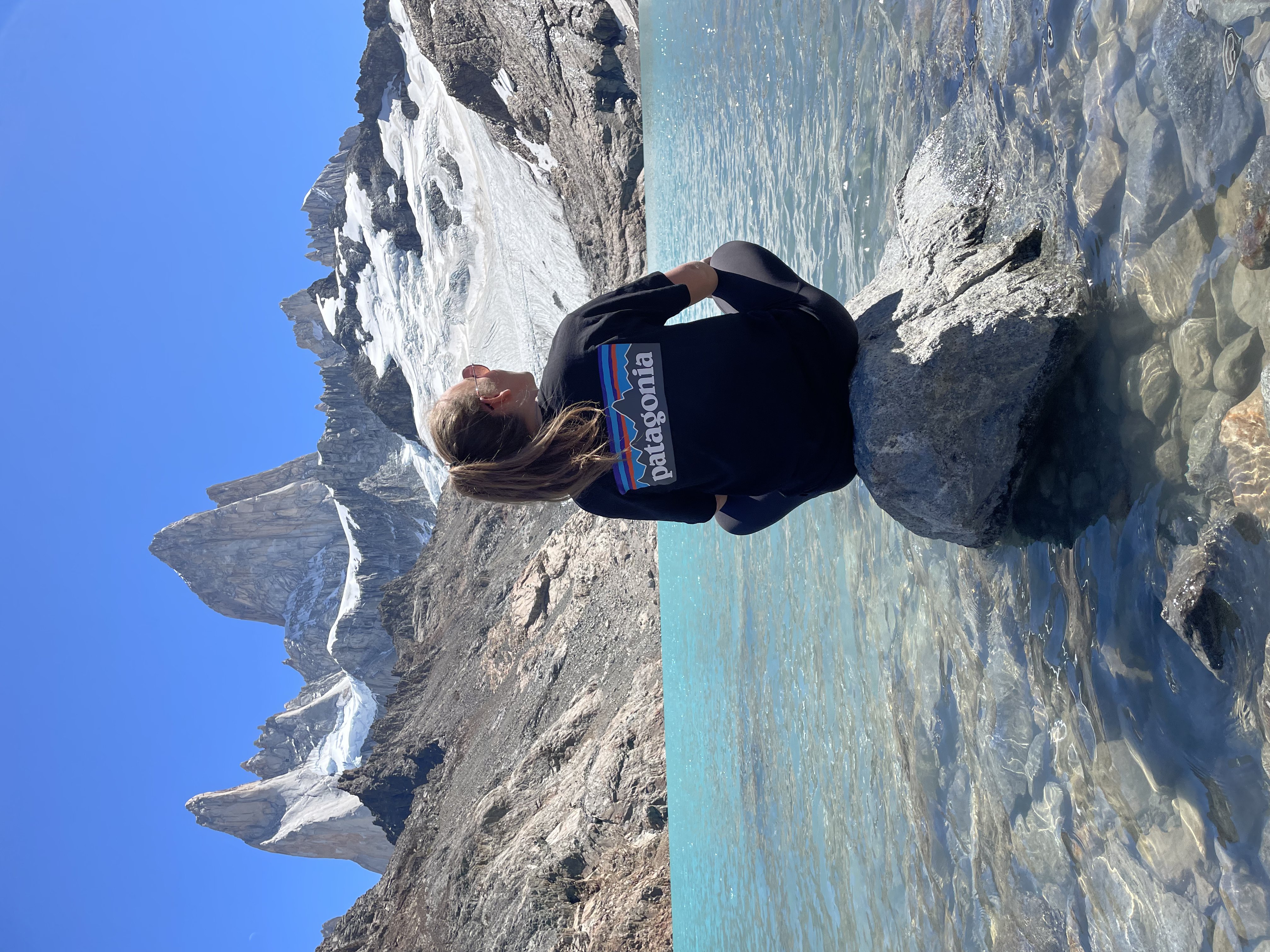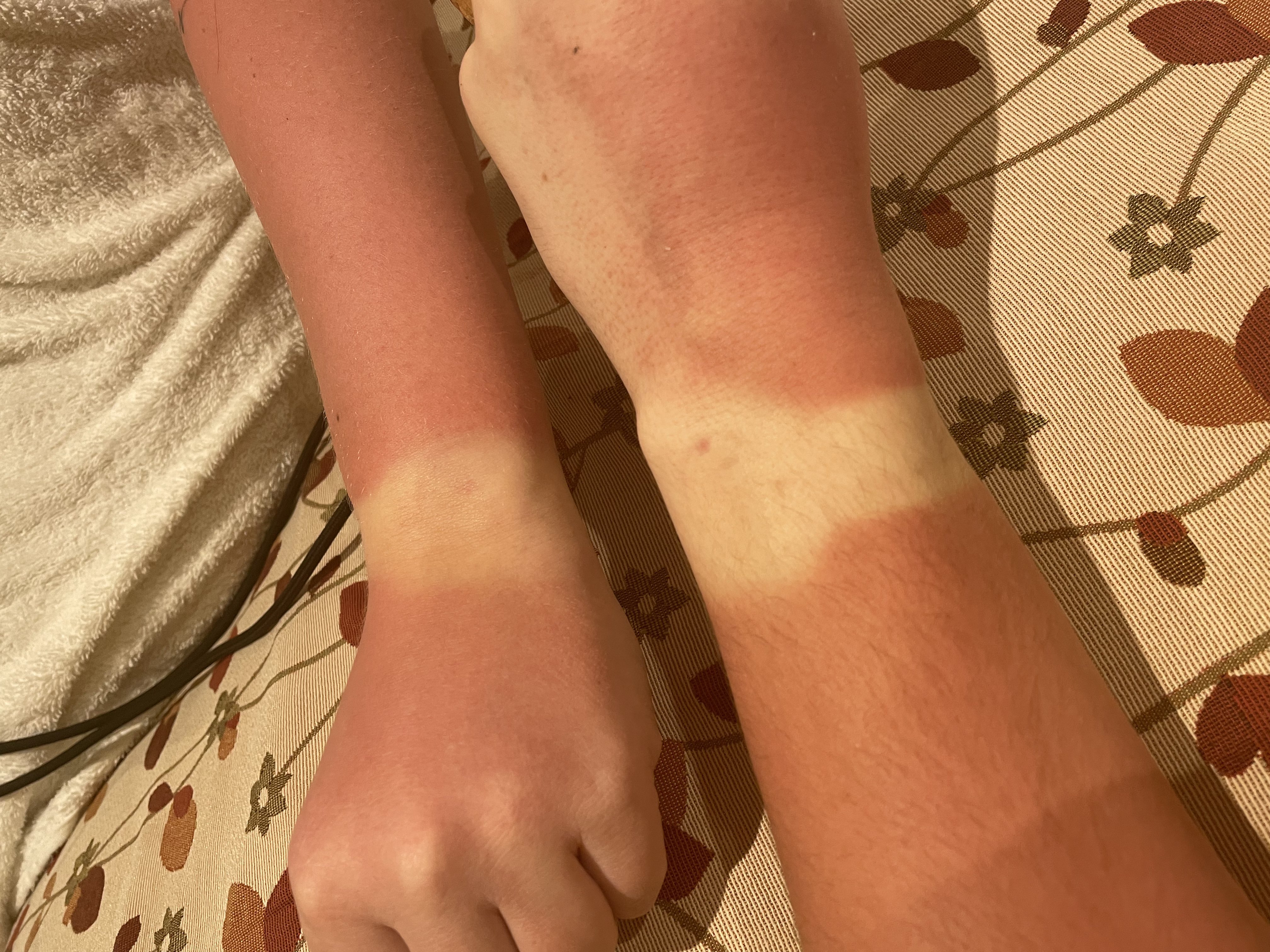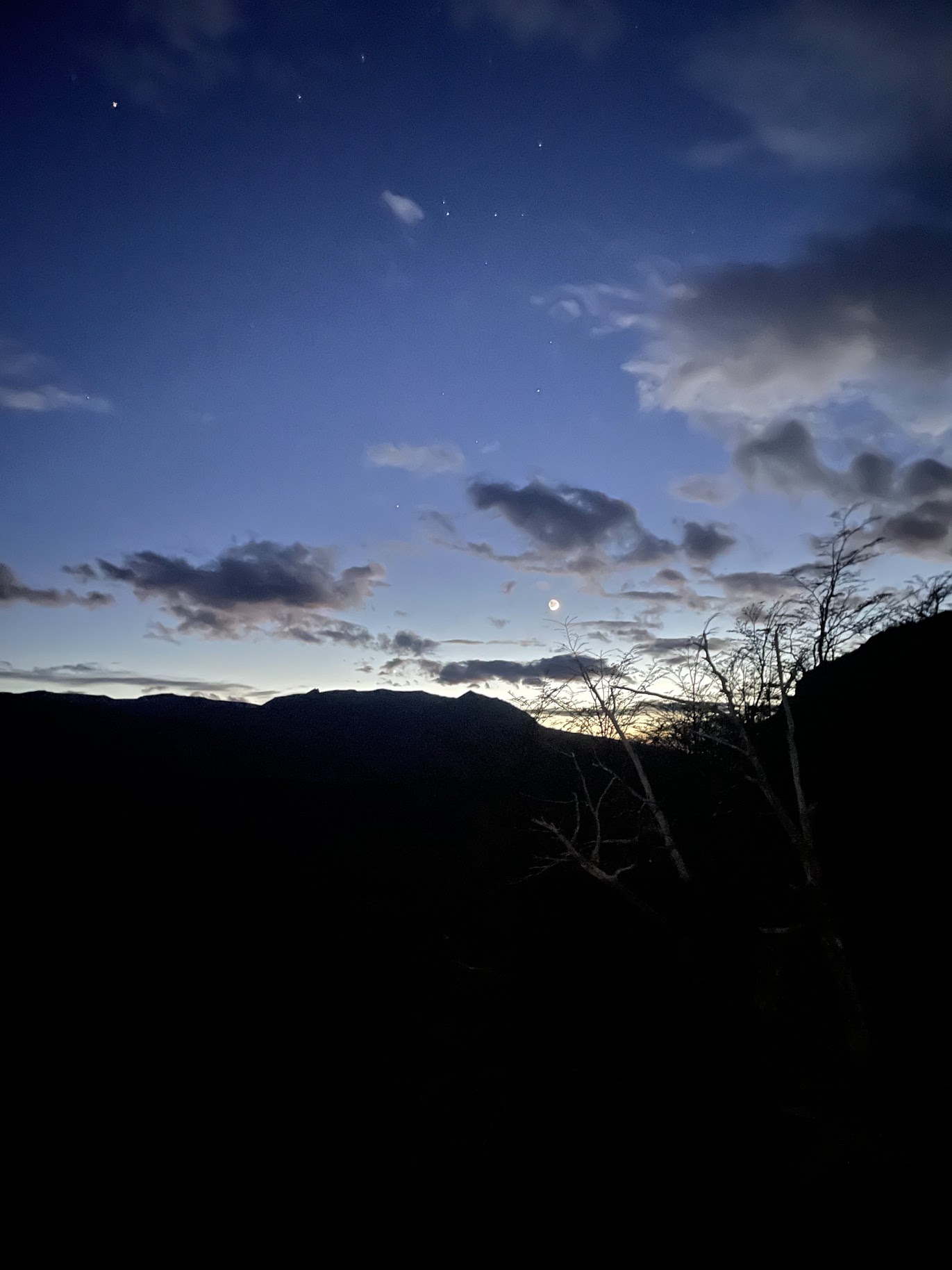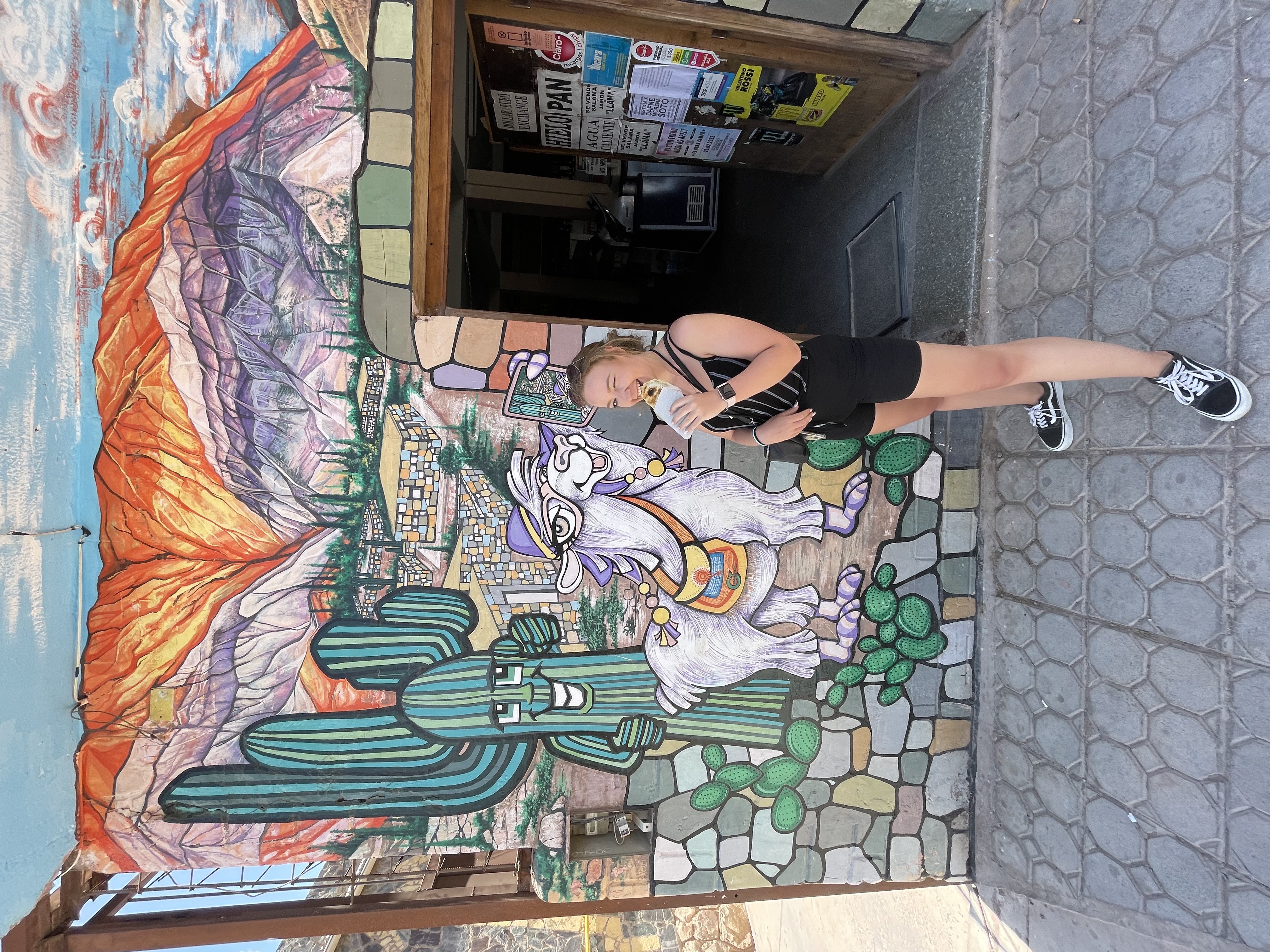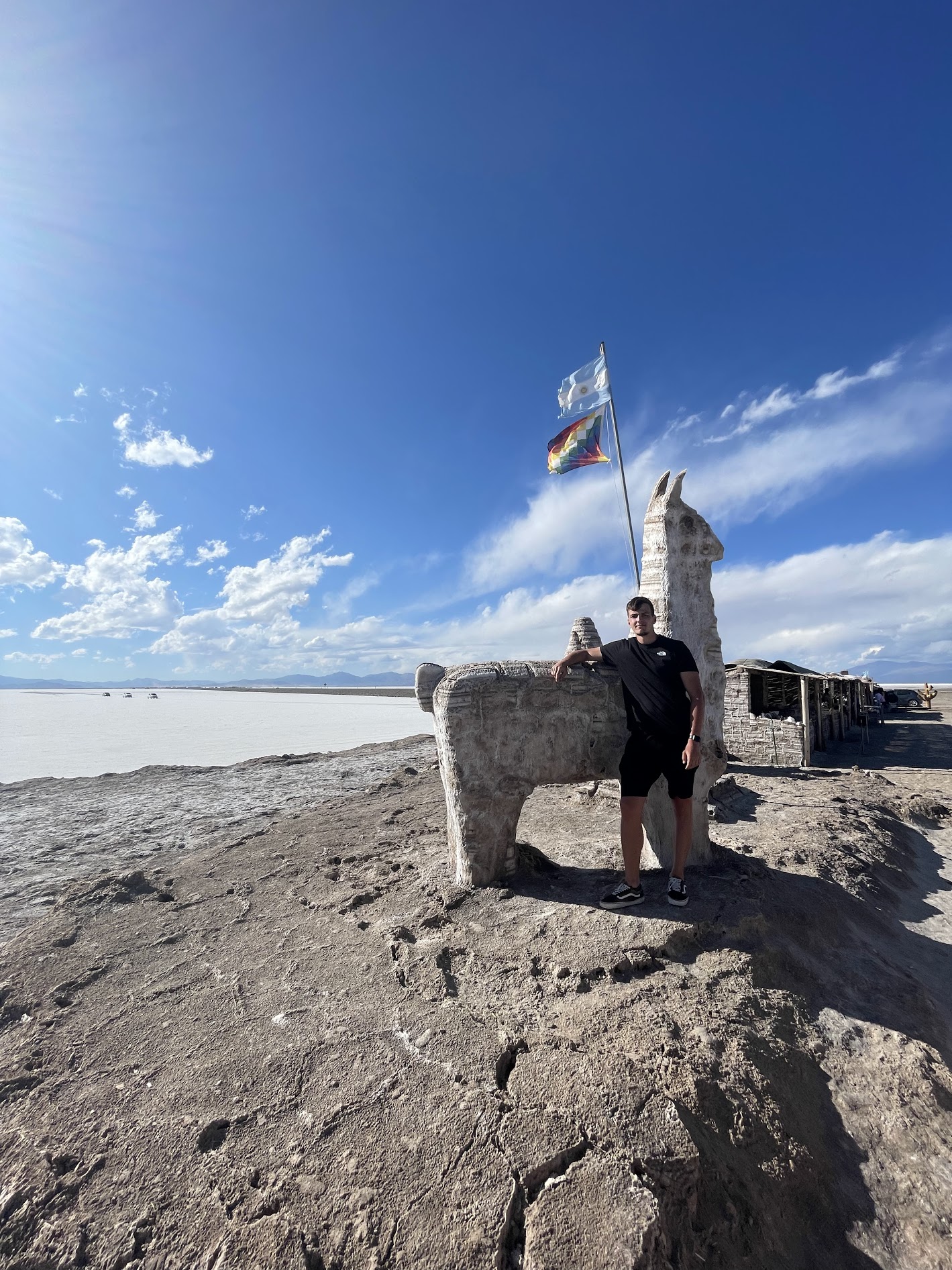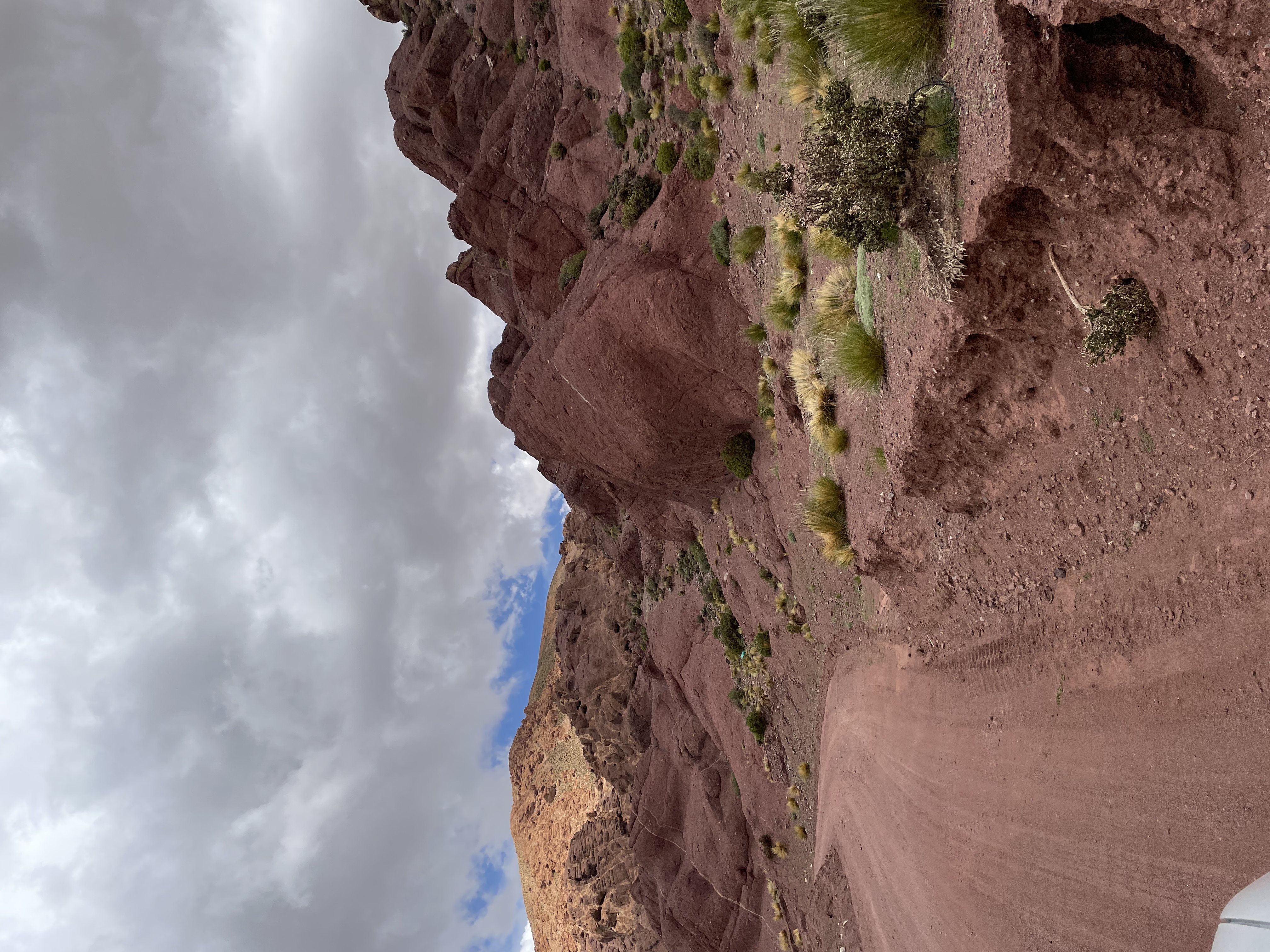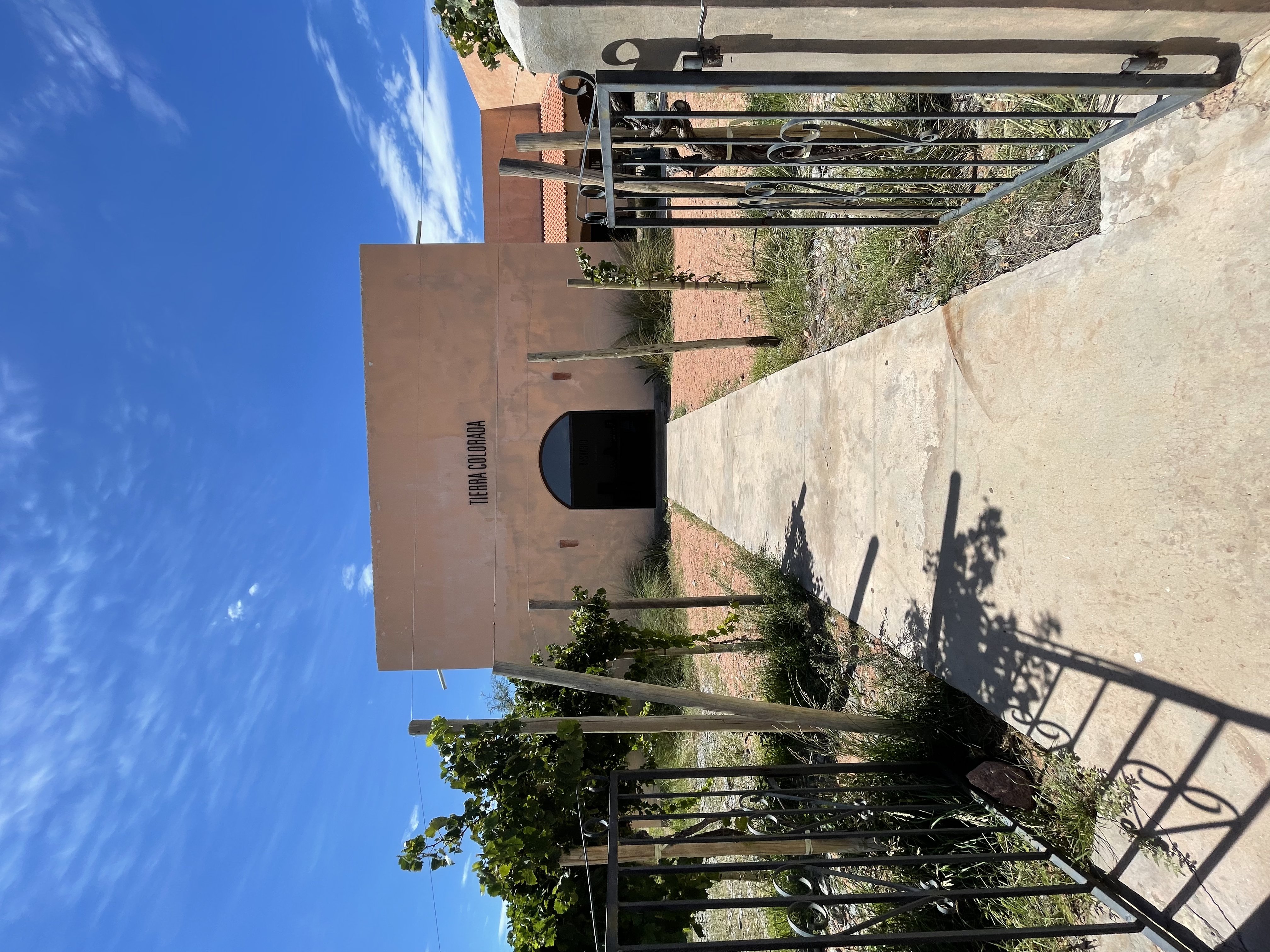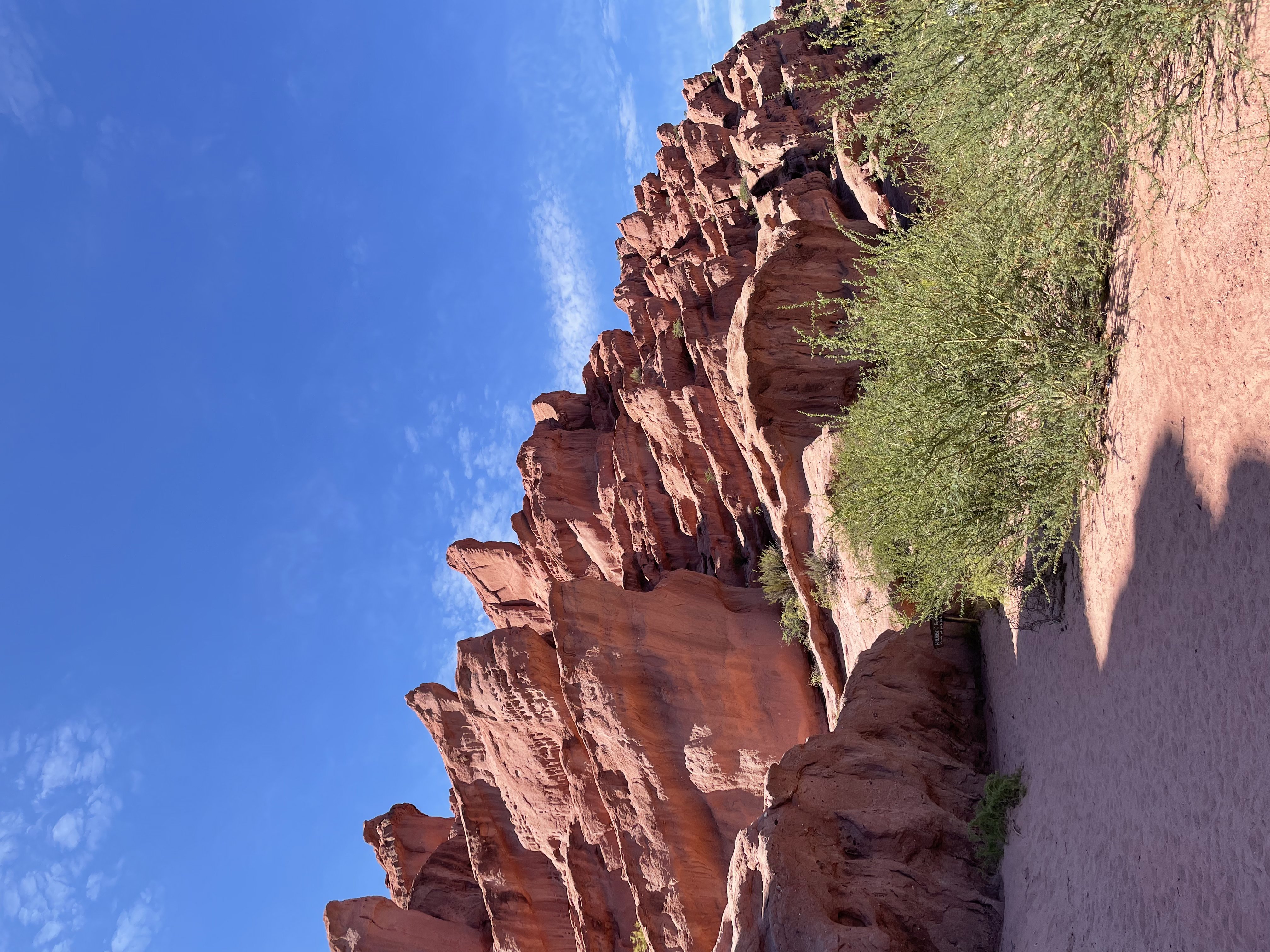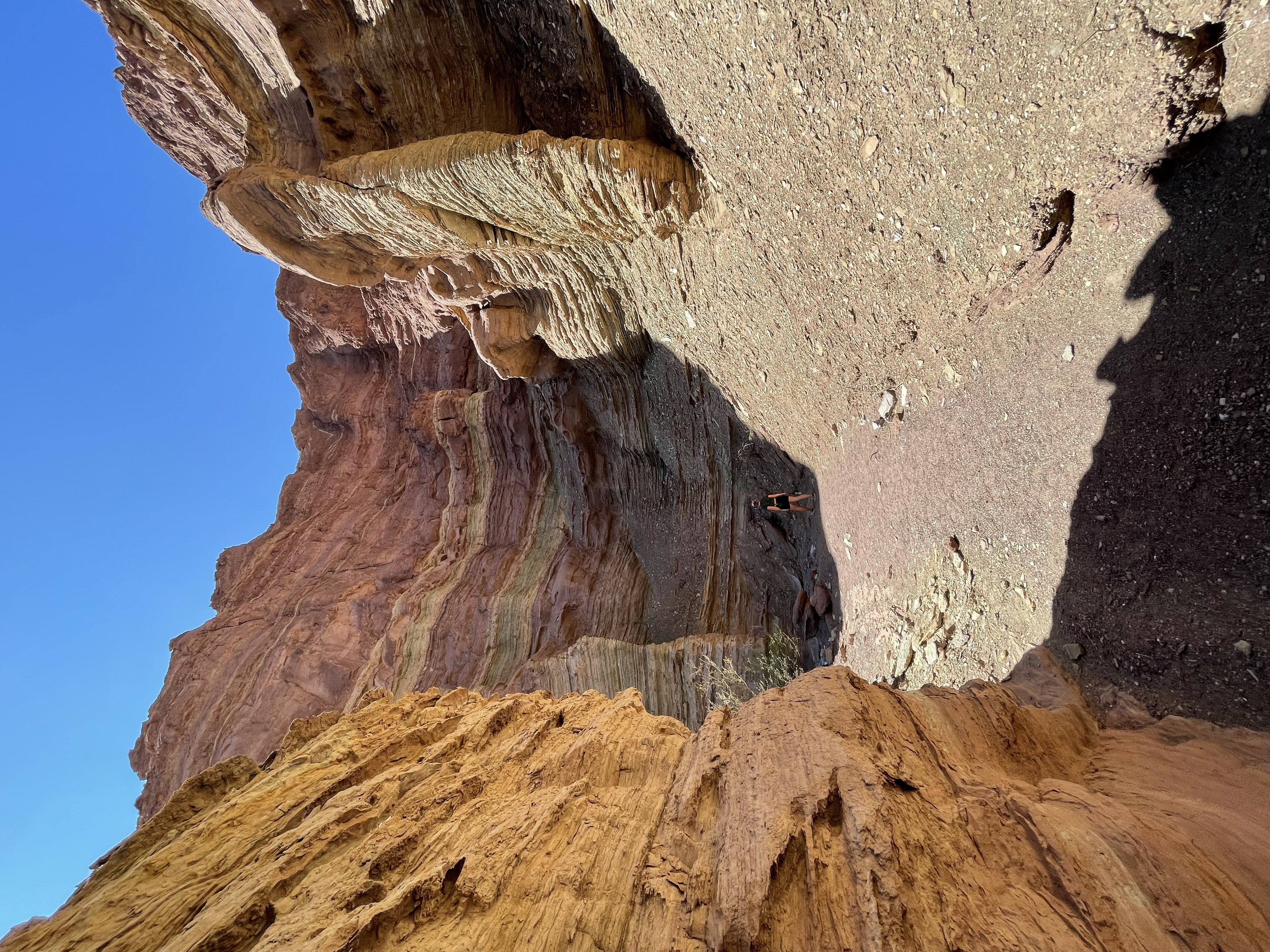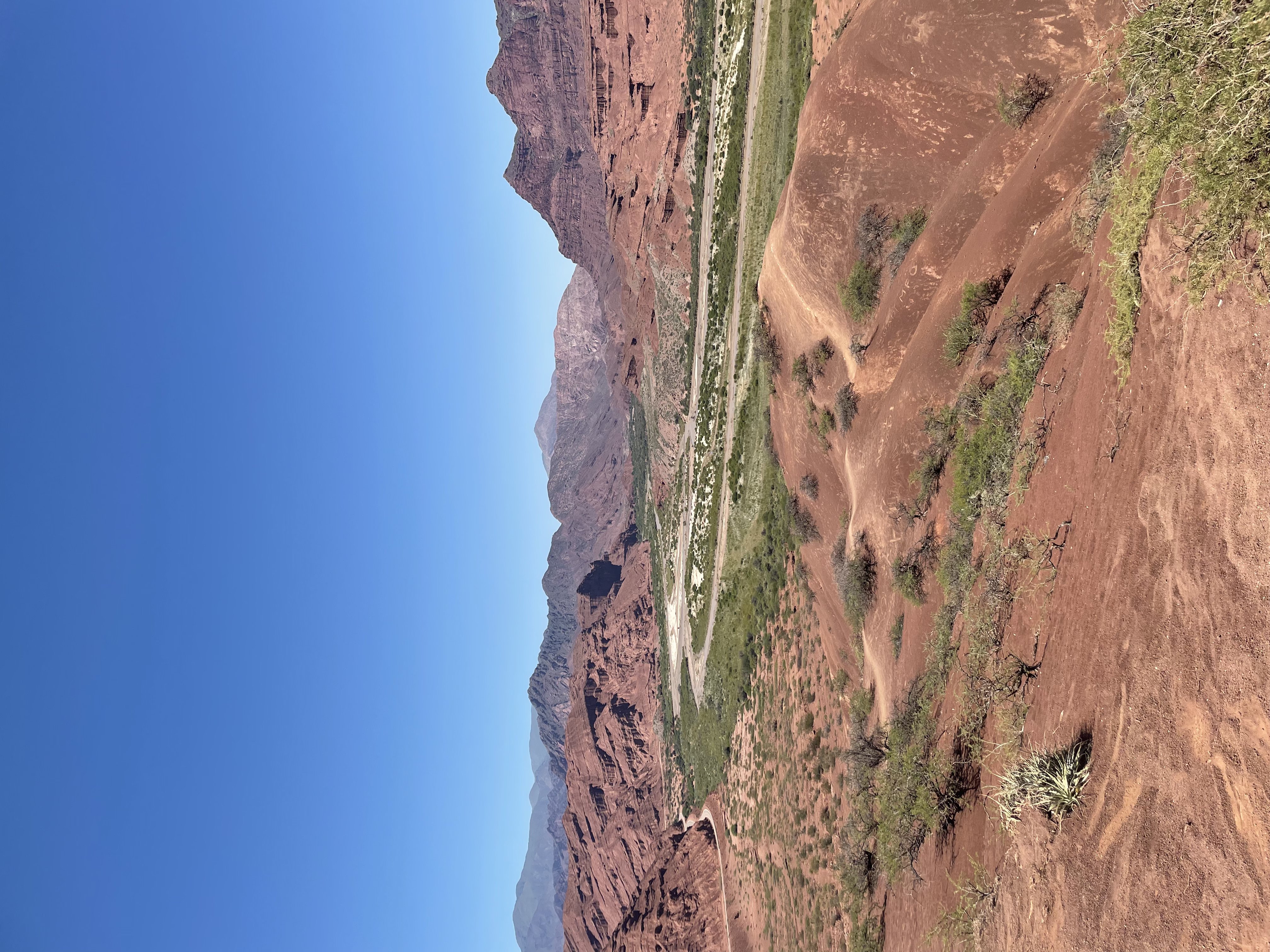At the beginning of the year, my girlfriend and I spent four weeks on the roads of this beautiful country. This was our first time in South America and we were really amazed and got lots of experiences and memories, so I thought I would write down some notes of our adventure and maybe share some tips and tricks.
If you came here only for some tips and don’t want to read the whole post (😞) you can scroll down to the tips section.
Arriving in Argentina
Getting here ✈️
Our journey started at the airport in Prague. We were aiming for the cheapest flight which in the end showed up to be Prague → Munich → Montreal → Sao Paulo → Buenos Aires 😅. Yeah, it surely took some time to finally get there, we had a couple of hours delay in Canada and also a one-hour stopover in Sao Paulo, where we had to disembark, go through the customs again and embark on the same airplane.
Finally, we arrived at Buenos Aires airport where the next challenge began. We had to get SIM cards and find a taxi. Both things sound like pretty simple and straightforward tasks to accomplish, but that wasn’t our case. At the airport, we bought a Personal card and tried to activate it. We were told it should take no more than a few minutes — after half an hour we gave up. Using the local Wi-Fi we tried to get a taxi. In Argentina, Uber is available as well as their local app Cabify (the latter has usually better prices). After some time of trying to figure out where are we actually standing and where is our taxi coming we found the guy. After getting in he asked us to pay in cash. At this point, we were confused and surprised as we didn’t have any cash and were hoping for a normal card payment via the app. Eventually, after some discussion in broken Spanish, we had to get off and keep looking for another taxi. Finally, we found one and after so many exhausting hours of traveling, we just wished to get to the bed asap.
Documents 📄
As we were traveling during the covid pandemic, there were several requirements and documents to present to be allowed to enter the country. Here’s the list:
- COVID-19 vaccination ✅
- negative PCR test ✅
- Insurance covering covid expenses ✅
- filled in the entry form ✅
Some people on the internet said you even need a returning flight ticket to prove that you will leave the country. This was quite tricky for me as I planned to stay here for an unknown time as my girlfriend was going to study here. To meet this requirement I used a so-called temporary ticket, which cost ~$14, looks completely legit (you can verify it on the airlines’ website) and is valid for a few days.
When we came to the border control at the airport, the officer just asked about the reason for my travel and that was it. He didn’t care about anything of the above-mentioned 😅. Then I got a stamp allowing me to stay in the country for 90 days. Truth to be told though, they checked some of those requirements right away in Prague and later in Canada.
First days in the country (learning how it works here)
The next day after coming from the airport we had two big priorities - get some cash and a functioning SIM card.
SIM card 📞
As I mentioned earlier we were unable to get the Personal card working so we had to find some alternative. Our friends recommended us Claro. So, we went to the shop, brought our passports with us and asked for a tourist SIM card. We paid around 1000 ARS and got a really good deal of 10GB for 30 days. Also, I have to mention that it started working immediately 🎉. They have a nice website where you can check your spending and also recharge if needed.
Money 💰
I’m no economic expert nor do I know much about the politics of the country but the fact is that even though the country is the third biggest economy in South America (after Mexico and Brazil), they struggle with corruption, big debt and inflation 😕.
To mention some interesting (useful) facts:
- cash preferred payments — most of the time you will see people paying by cash. It was a bit hard for me to get used to it as I quickly got spoiled by paying for everything using my phone back in Europe. But speaking of paying by phone, some people also use QR payments, which I’m not sure if you as a tourist can get to work as well, but they just simply scan a code and show the payment result to the cashier. Payments by card are also possible, but often they take the card from you and swipe it by themselves (this felt a little uncomfortable so we decided to put a sticker over the security code 💡) and usually ask for your ID card and signature on the receipt. The reason for preferring cash over cards is simple - you’ll pay much more when paying by card. Some stores even say things like “15% discount” when paying in cash.
- high inflation (~50%) - this is really bad and money quickly loses its value. During our stay, we noticed the rise of the prices several times 😕.
- the largest banknote is 1000 ARS (Argentinian pesos) and at the time of writing this article, the value is 1000 ARS → 8.2 €. So when you go buy something even a little bit more expensive it often looks like this:
The banknotes are very nice though, I must say 😀.
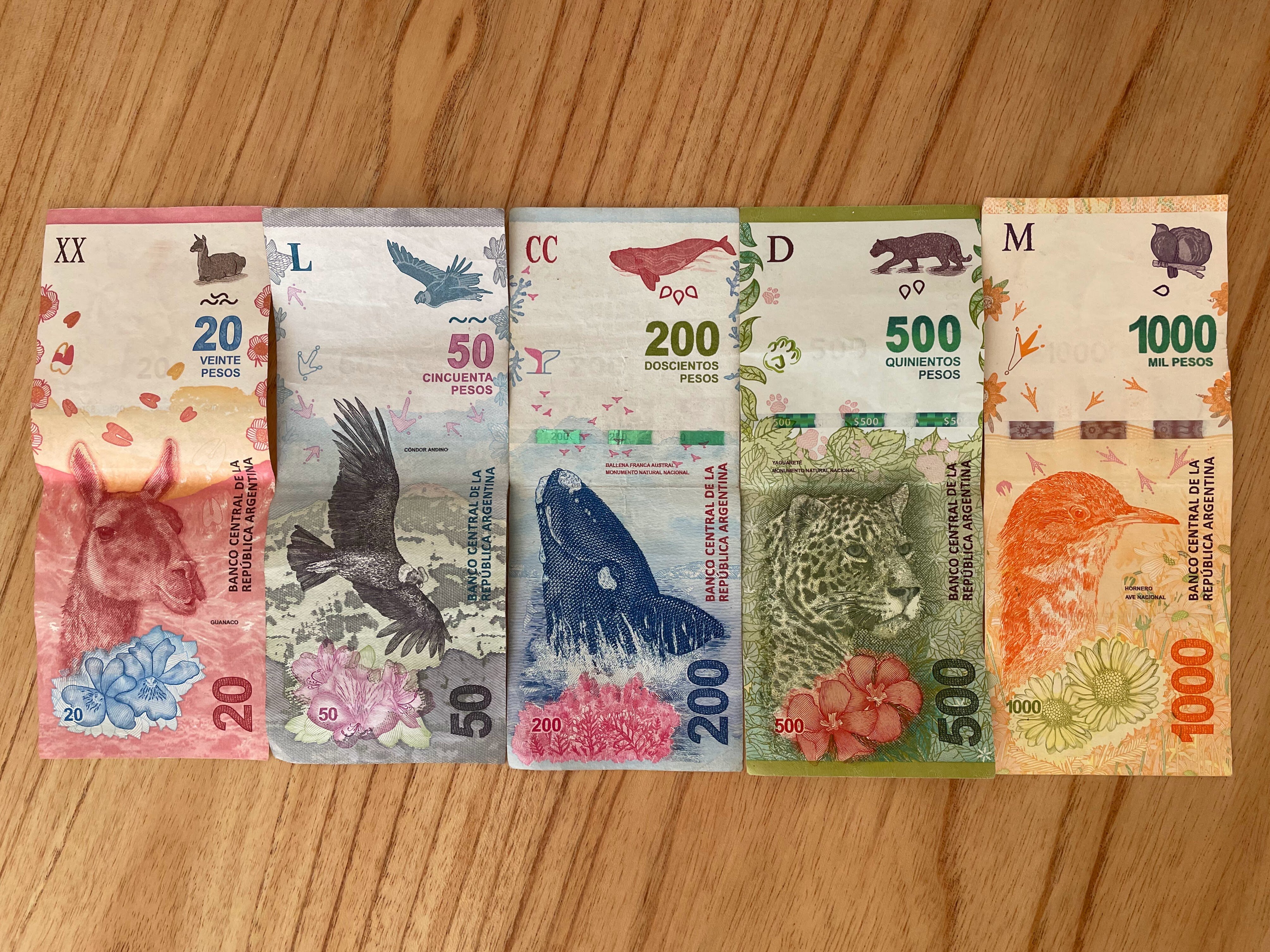
- Blue dollar — In Argentina there is this interesting thing called a blue rate, or an unofficial rate. In reality, the unofficial rate has almost double the value of the original rate. Currently, for 1€ you would get 122$ (arg. pesos) or you could get 205$ on the blue market 🤯. This means if you pay with cash you can save a lot of money, i.e. everything is almost half the price. Some locals offer you exchange dollars for pesos using the unofficial rate but we relied on WesternUnion which uses this rate too. However, until this day, I still don’t understand how exactly this whole system works 🤷♂️. But I think it has something to do with the government, not using cards and the inflation.
Finally traveling 🙈
After a few days in Buenos Aires, the time has come and we went to the airport again. We didn’t have a strict day-to-day plan but we had a list of things that we wanted to see and always planned for the next few days accordingly.
Our main plan outline looked like this:
- ⛰️ Patagonia — We planned to hike some trails in the Patagonian mountains in El Chalten and see the Perito Moreno glacier in El Calafate.
- ❌
Chile— Continue with hiking in the Chilean part of the mountains.Due to the pandemic, the borders were closed and restrictions were quite strict, so it got complicated (but not impossible), hence we decided to keep Chile for another time.
- 🐧 Puerto Madryn — Next stop was to see penguins in their natural habitat in Punta Tombo.
- 🆕 Salta & Jujuy — Because we canceled Chile, we got extra time for exploring other parts of Argentina. At first, we didn’t plan to see the north, but it turned out to be really wonderful. Oh boy, what a shame it would have been to miss it.
Patagonia ⛰️🥾
There are two airports in Buenos Aires - Ezeiza (30km from the city center) and Jorge Newbery airport (located in the city), we flew from the latter with JetSmart and the flight took around 3 hours.
After landing in El Calafate, we decided to go to El Chalten first as it seemed more suitable for hiking based on the weather forecast for the upcoming days. We took a bus (3 hours) directly from the airport. There are multiple companies operating in Patagonia, we chose Marga Taqsa. We have always tried to check reviews on the internet before but we learned people are often complaining about little things or reviews are contradictory, so it’s best to try them out for yourself 😛. You can buy tickets online on busbud.com which we used quite extensively but beware that sometimes they require to have a ticket printed out!!
Overall, the quality of buses in South America seems to be okay (at least for the tourist buses) and they usually have comfortable seats with more leg room designed for the long-distance journeys. I think buses here are even better than in Europe.

El Chalten
The first thing we saw after getting off the bus was this amazing view of the mountains 😍. The second thing we noticed is there was no cellular network 😅 (!) So keep that in mind and try to download all important documents and maps offline. Later, we learned this is the case in many parts of Argentina. But this fact strengthened our appreciation of this place even more and we could enjoy this magical nature without interruptions.
We were here during the summer season (end of January), so the prices for accommodation were quite high even though we had an average-looking hotel with breakfast and even no running water sometimes. However, this was the issue of the town as we learned later. Anyway, lots of microbreweries and many hikers in the town made really great vibe and we enjoyed our stay very much.
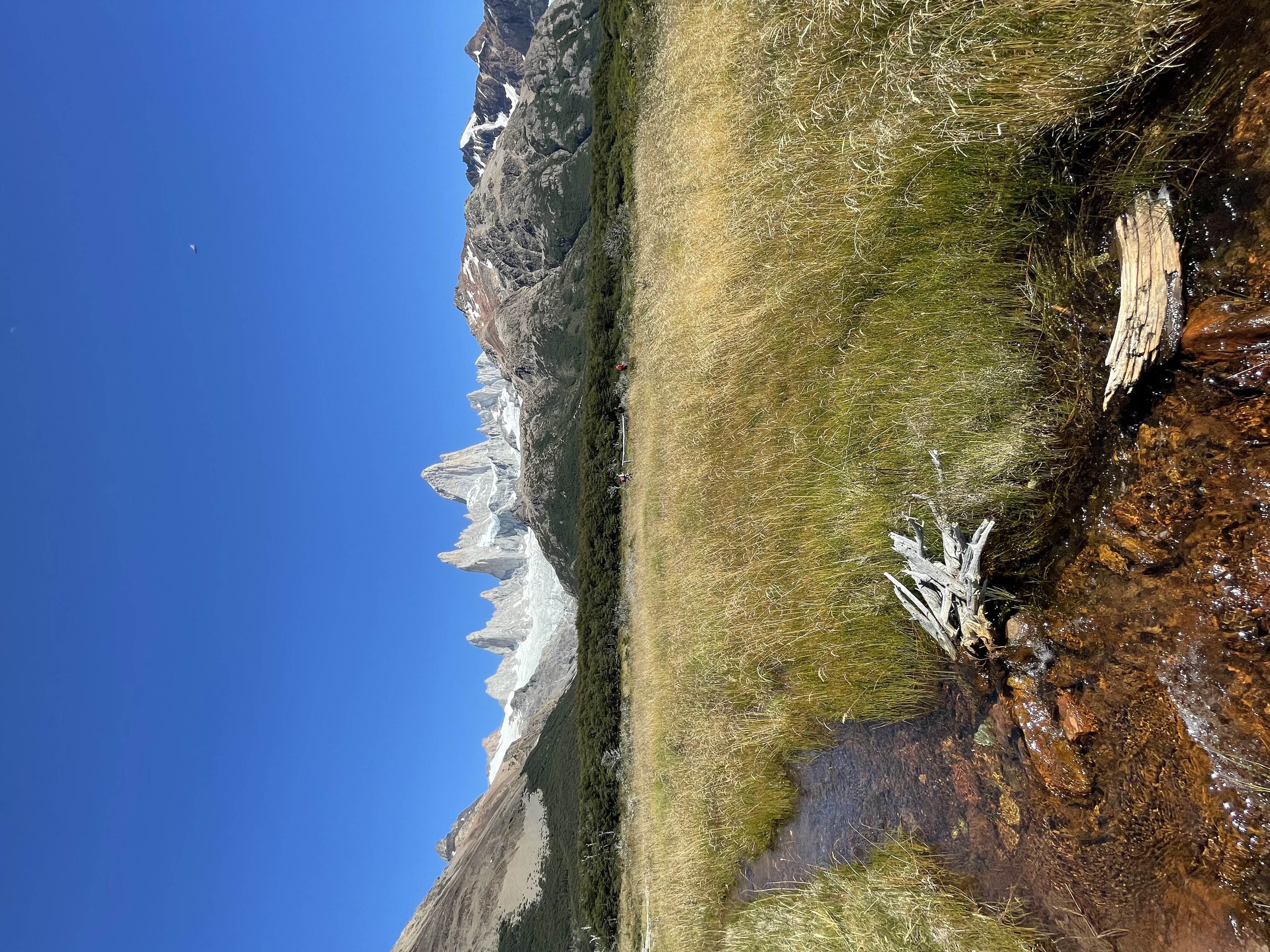
The next morning we went on our first hike - Mount Fitz Roy. The hike is more than 20 kilometers long and takes 8-10 hours to complete. The scenery along the way is picturesque and we had to stop many times just to snap a picture. Overall, the hike wasn’t very difficult and challenging until the last part where you have to ascend a very steep hill for an hour to reach the lake. There is even a warning saying that you should really consider your abilities. But it wasn’t that hard after all, if you don’t sit on a couch all day long you will be fine.
Along the way there is a two-way split, the first way goes to Laguna Capri, where there is also a place for campers. The other one goes to a viewpoint from which you can see the mountain. Both are joining again after some time, so you can take one on the way there and the other one on the way back.
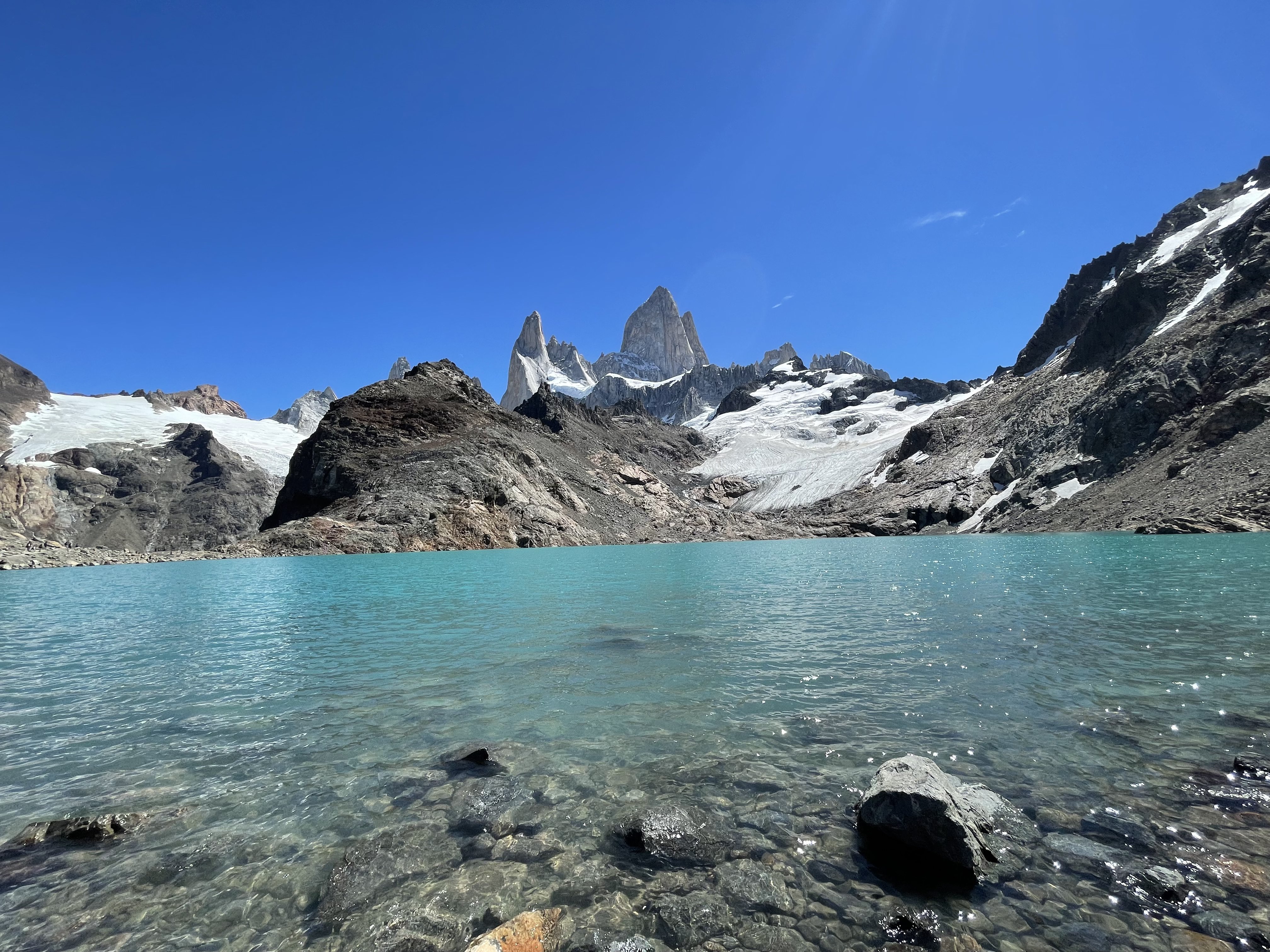
The next day we decided to go to the other very popular trek - Lago de los Tres. The hike itself was not so difficult but the fact that we lose our fight with the sun the day before made the whole trek challenging and painful. We got everything covered this time, we wore long-sleeve T-shirts, long pants, a hat, and even covered our necks so you can imagine how uncomfortable it had been hiking and sweating on a high-temperature sunny day. Still, we got sun burnt - our poor lips this time 😩.
But all this pain was 100% worth the views we got to see 🙈!


After completing both treks, we had our last day in El Chalten so we decided to go catch the sunrise in the morning. Sun was rising at 6.20 so we had to wake up very early to make it there on time. Honestly, it was a little bit scary going to the forest in total darkness, but the desire to see the sun rising over the Patagonian mountains was stronger. Also, having a headlamp helped a lot. Even though during summer days the weather is quite good, at the night it was really freezing 🥶.

Mission successful, we saw the sunrise, took photos, made a time-lapse and now it was time to get on a bus to El Calafate.
El Calafate
After taking a bus for approx. 4 hours, El Calafate welcomed us with its infamous Patagonian wind 💨. I don’t know if I’ve ever felt the stronger wind. Finally, we arrived at our Airbnb and could take some rest. Later that day we went to explore the town a little bit and found a natural reserve (Laguna Nimez) with lots of different bird species and flamingos 🦩.
The next day we took a trip to the Perito Moreno glacier with Patagonia Dreams. You should definitely book the tour in advance at least a few days before because it gets sold out pretty quickly, we were very lucky we found some last-minute spots as we only did our booking two days before.
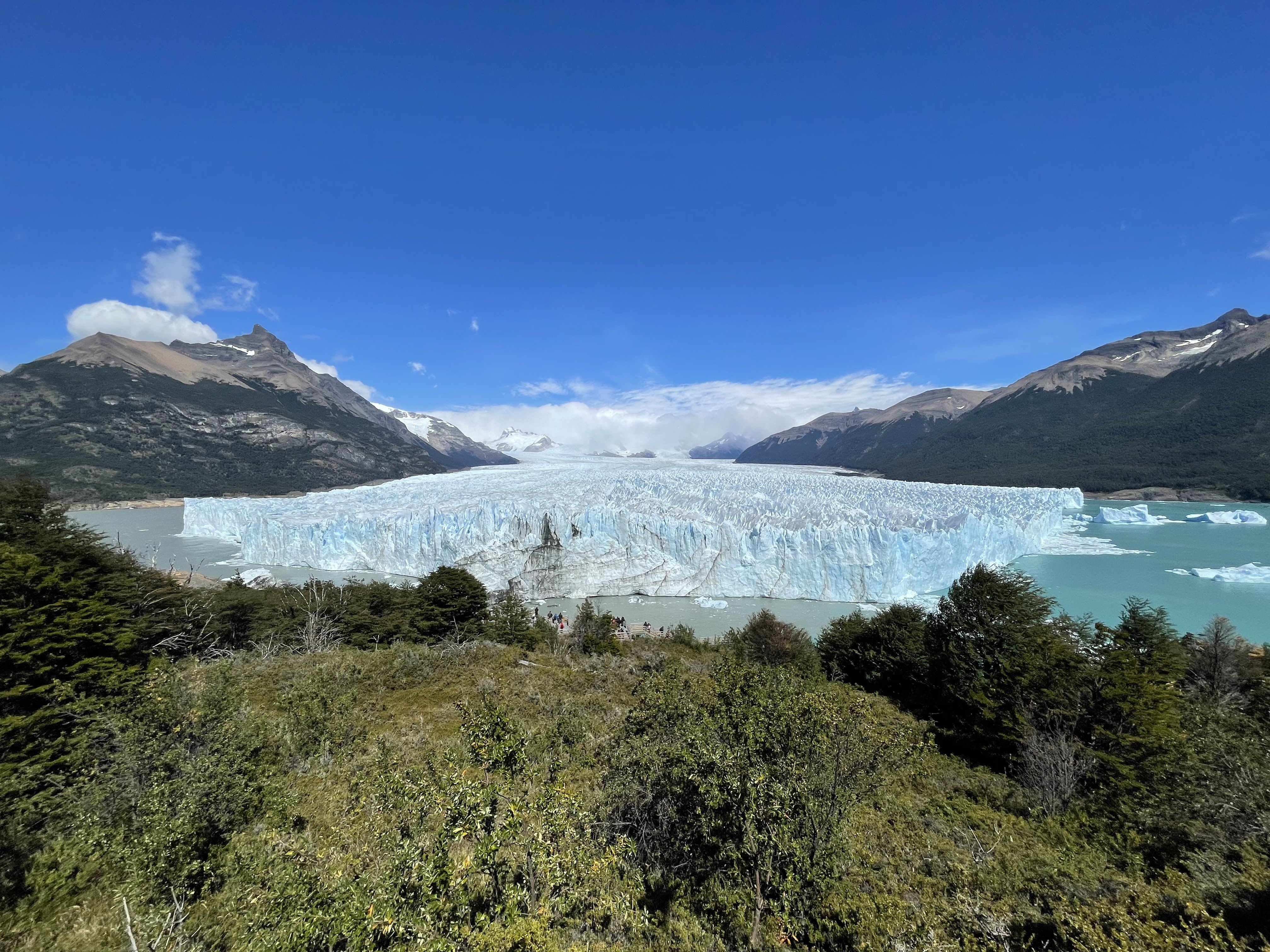
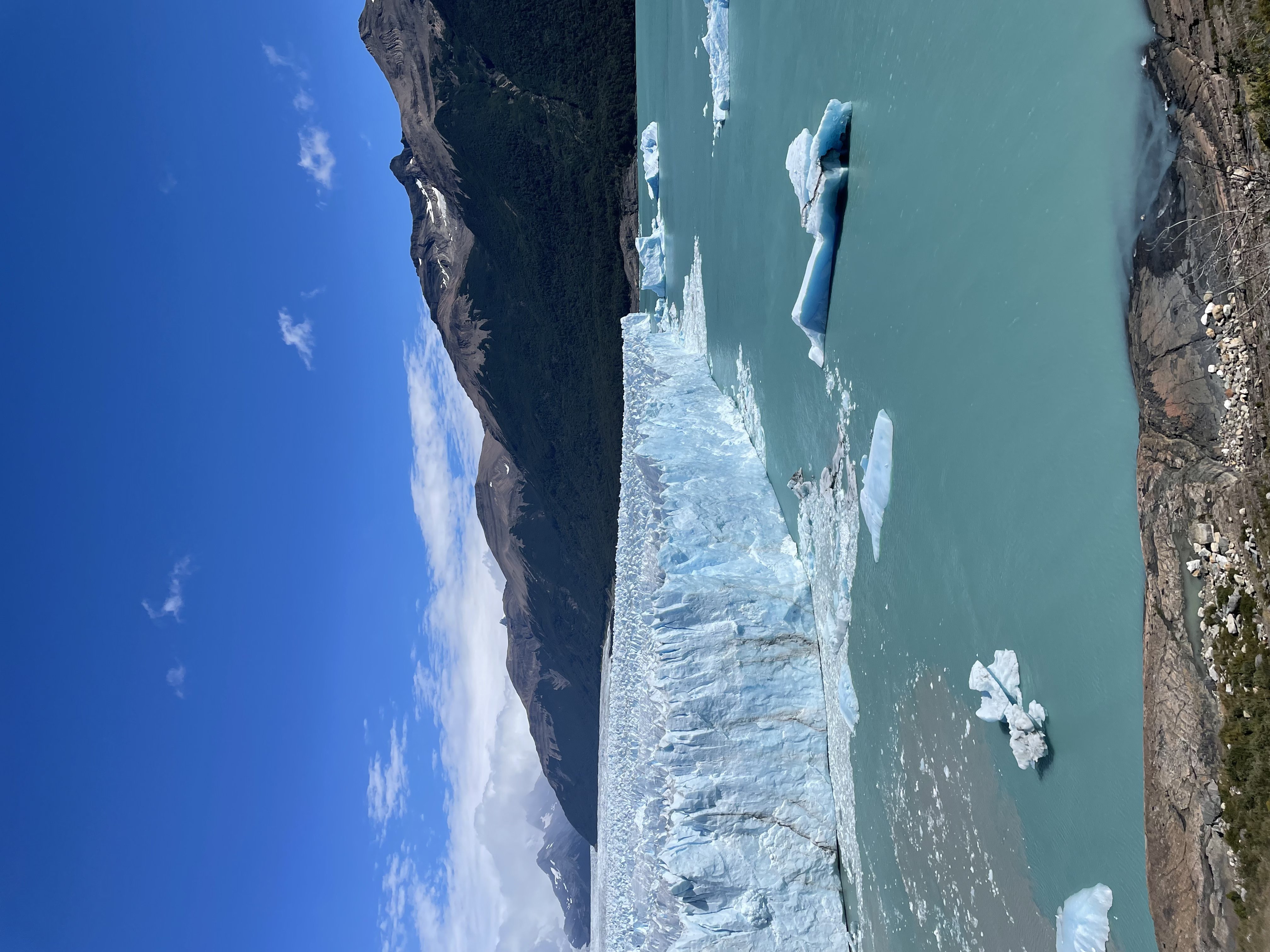
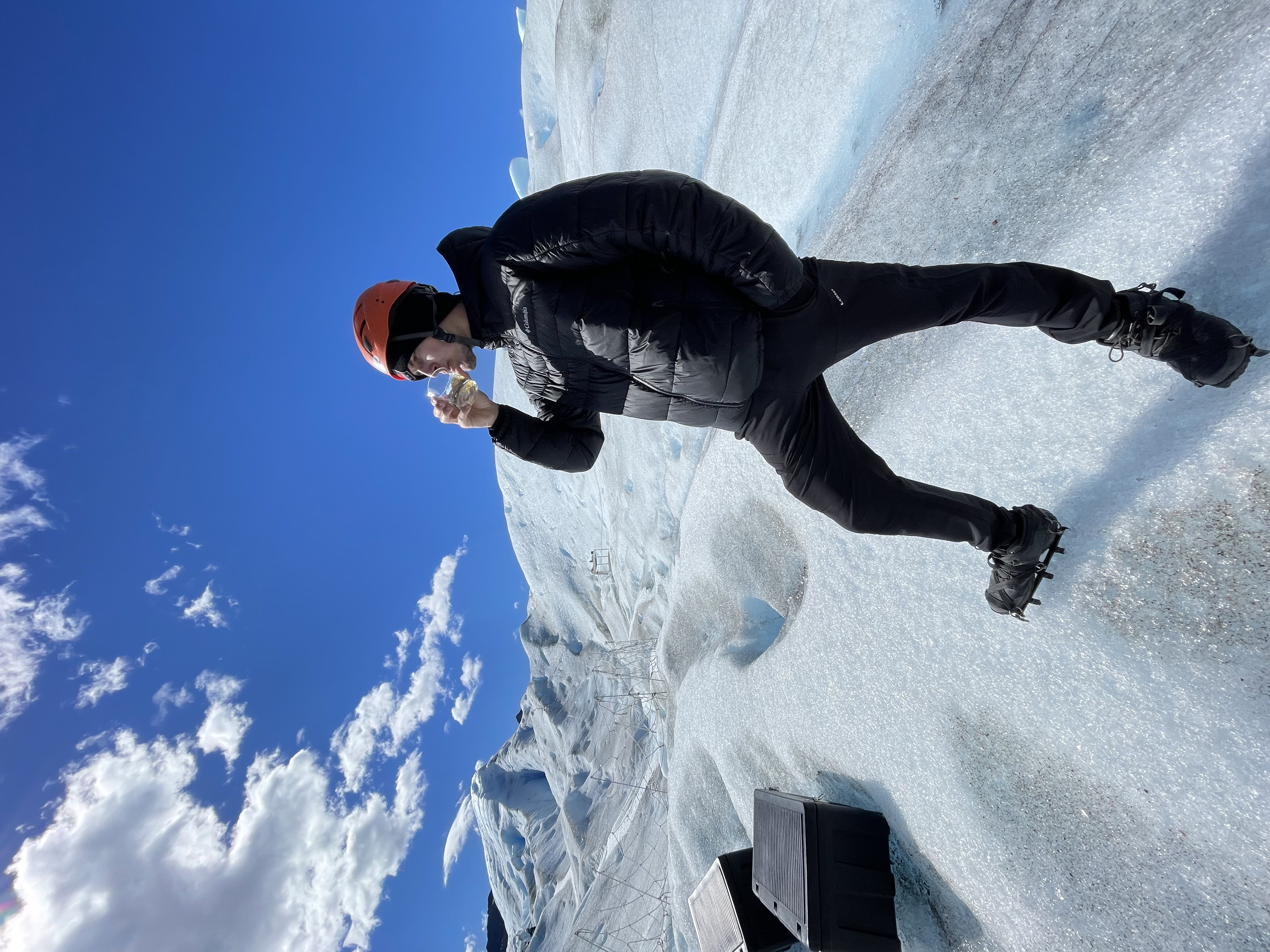
As a part of the tour, we went on mini trekking, where they give you crampons and you go walking on the ice. Very cool experience, definitely recommend it! The trekking was finished with a glass of whisky with ice from the glacier which was a nice touch after the whole day 🥃.
Watching animals in Puerto Madryn 🐧 🦭
We had to say goodbye to the mountains and get to our next destination which was only 1,600 kilometers away - Puerto Madryn. We spent some time planning and researching the best route to get there but eventually we had to accept the fact that unless we want to buy flight tickets, which are not always cheap, we have to get on a long journey by bus. Therefore, our next steps went from El Calafate → Rio Gallegos (4h) and then Rio Gallegos → Puerto Madryn (20h). ;
After we finally arrived, we went straight to our hostel La Tosca . There we talked with the receptionist and booked a private (3-4 people) tour for a decent price to see penguins and sea lions. I definitely recommend this place and the tour as the guide was a really nice guy and even took us to some secret place where we could watch sea lions from only a few meters distance.
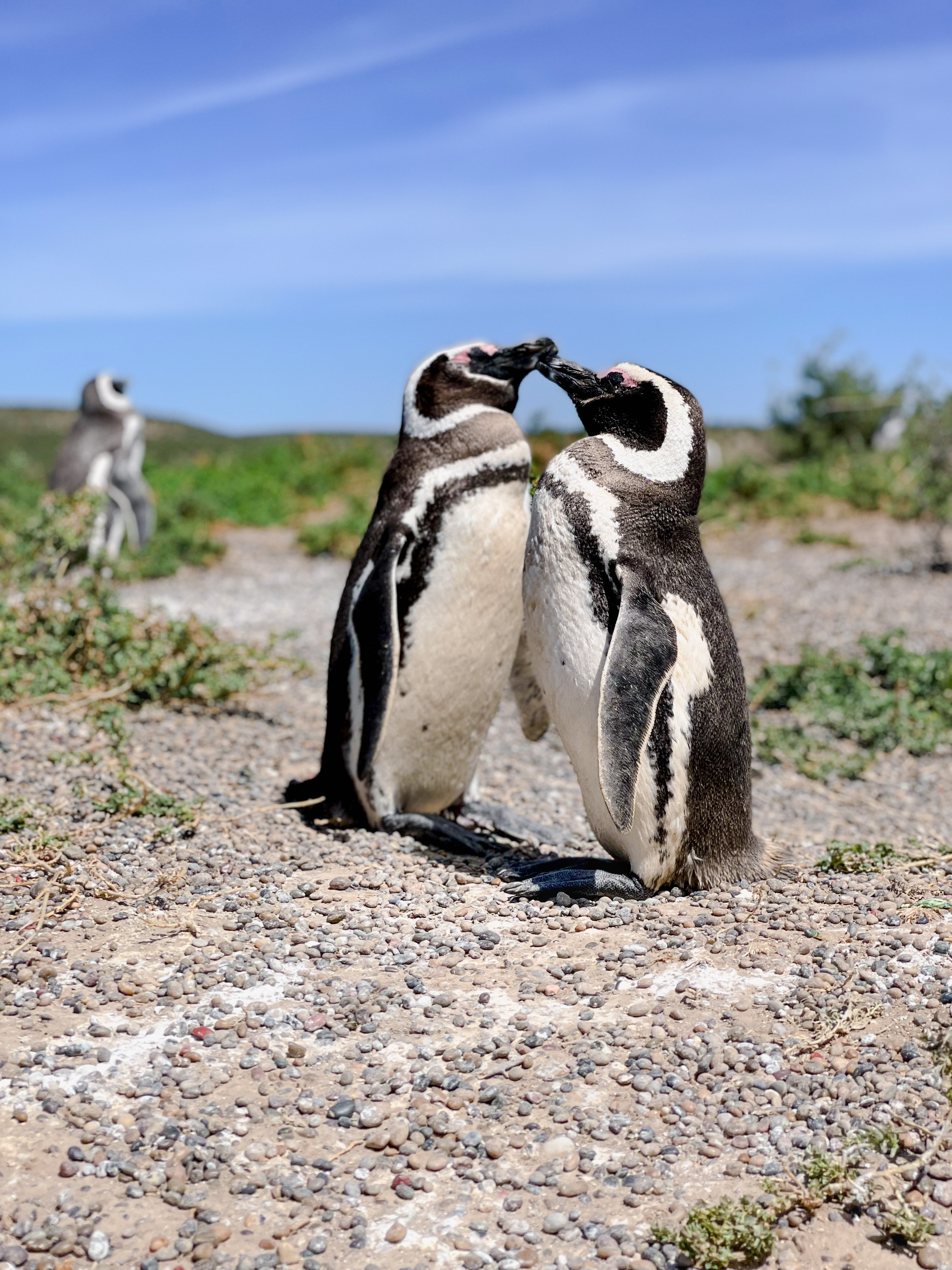
We spend here a few days and visited two places:
- Penninsula Valdes - a great place for watching whales, sea lions and elephant seals.
- Punta Tombo - a natural reserve known for its vast colony of Magellanic penguins, with trails and boardwalks you can walk on and observe thousands of penguins around you.
As our original plan with Chile didn’t work out, we had some extra time to spend before returning to Buenos Aires, so we decided to do a road trip in the north.
Going to the north 🌵🦙
The next morning, we were waiting for a minibus that would take us to Trelew, a city close to Puerto Madryn, from which we flew to Salta. After landing, we immediately noticed something was different. Everything was green and the city was surrounded by big mountains. We had a rented car waiting for us at the airport so the adventure could begin right away.
It’s worth mentioning that we didn’t have any exact plans, only a vague idea of places that we wanted to see. Therefore, we always planned accordingly for the next day, sometimes even on the fly.
The whole adventure took us 8 days but it could be less or more depending on how much time you have. North Argentina is very beautiful and there is still plenty of awesome places that we didn’t get to see.
Day 1
Right after getting the car, we headed straight to San Salvador de Jujuy, a city located 120 kilometers to the north of Salta.
It’s important to note that the majority of the north region is located in the high mountains so you might get altitude sickness (which allegedly might be a serious problem). We got a headache just a few minutes after leaving Salta as the road started ascending immediately.
The plan for the first day was just to get to the hotel and take some rest. Also, it was a good time to start getting used to the altitude as you should continue gradually and not make more than 500 altitude meters a day.
Day 2
The first destination after departing from San Salvador was the village of Purmamarca. The entire north is surrounded by colorful mountains and this was one of the places where you could admire them.

After that, we continued to Tilcara, another spectacular village. You can visit a botanical garden here where they have lots of cactuses and it also offers great views of the mountains.
We had lunch here and then continued further.

The last place for the day was Humahuaca. We booked a hotel here and walked around a little bit. The altitude sickness started hitting here and walking to even smaller hills became physically demanding accompanied by shortness of breath and headache. That’s why we decided to rather return to the hotel and take a rest.
Day 3
The main reason for going to Humahuaca was to see the Serranía de Hornocal. Even though the view was only 20 kilometers from the village, it took us almost 1 hour to get there as the whole road was unpaved and we had to ascend to 4200 meters above sea level.
The next stop on our journey was Salinas Grandes which is a big salt flat laying at an altitude of 3450 meters above sea level. The journey from Humahuaca took around 2 and a half hours and we had to get through the mountain pass. It was really beautiful and for 1000 pesos we could drive through it.

After finishing the drive and taking photos we had to decide what to do next as we had no other plans 😀. It was already 6 pm and there were only two routes leading to the nearest towns, both at least 2 hours drive. One of them was unpaved which we didn’t want to take for obvious reasons as it was getting dark. Another was going in a slightly different direction than we originally wanted to go. Moreover, we had no internet or cellular connection so this made the situation more difficult. However, we were lucky that we saved Google maps for offline use.
After checking the map we found a town called Susques that was only 60 kilometers away. We decided to go there hoping we would find some accommodation or at least an internet connection. The journey was very nice, the first part was just a straight road heading to the mountains, so we enjoyed a nice sunset. Then we went into the mountains and took many serpentines until we got into the town. The town was very small and authentic, with no paved roads and local people staring at us 😃. Luckily we quickly found a hotel (Hotel Cactus, I think it was the only one in the town) and had a good dinner there.
Day 4
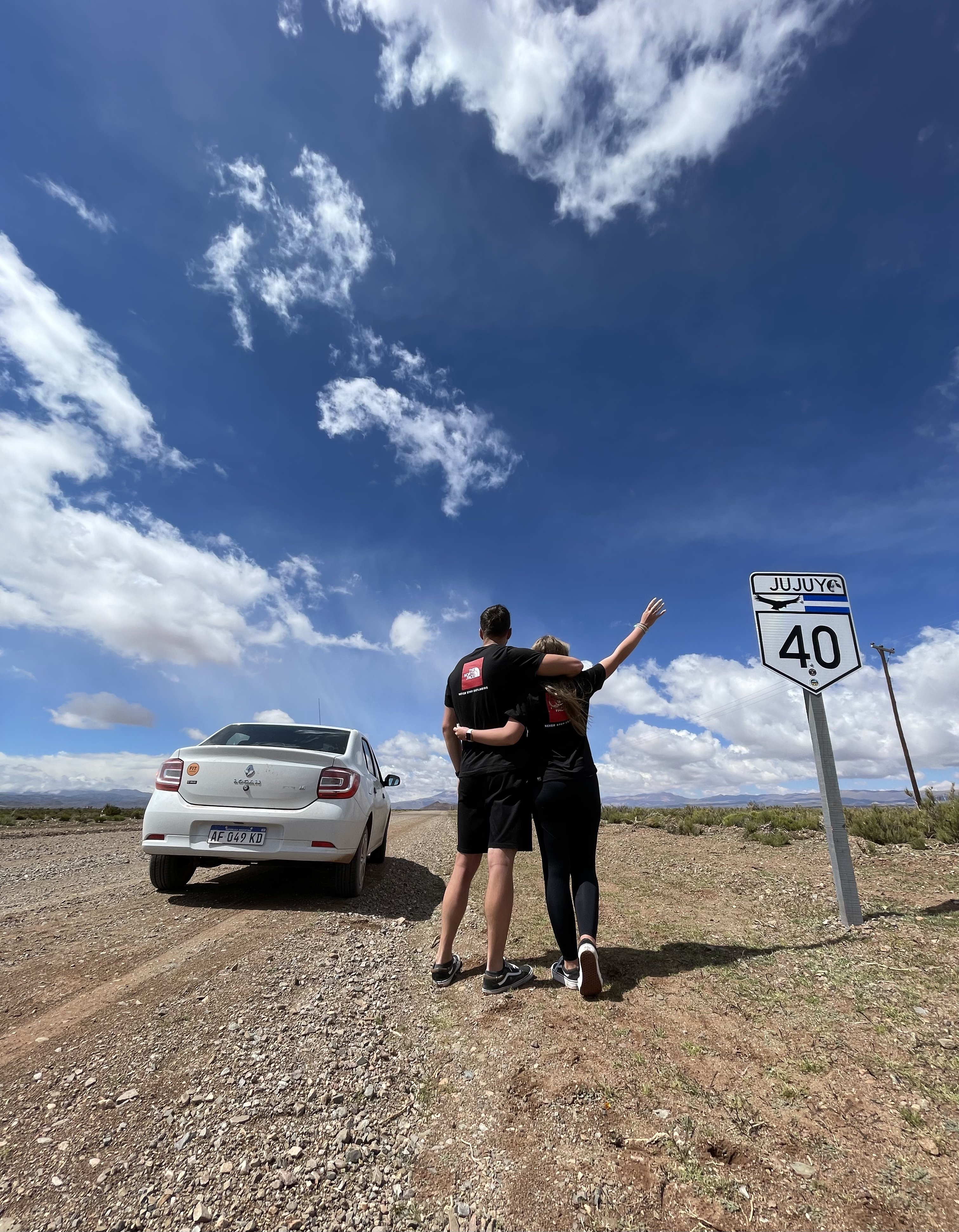
The plan for the next day was to go down to the south using the famous Ruta 40. Shortly after starting, we had to scare off a herd of lamas in order to continue 😄. It all seemed very nice and different as we were going through clay roads surrounded by hills. Even though driving on such a surface was not very comfortable, we got used to it after a while.
Ruta 40 stretches across the whole country from the north to the south and parallels the Andes mountains making it the longest route in Argentina and one of the longest routes in the world too. Even though it’s called a national route, don’t expect any good quality. There are new routes connecting different cities and I think this serves only as a historic route or for people that live in small mountain villages. During the whole journey, we only met 3-4 cars so it’s definitely not used very much. At least not the part that we took between Susques - Cafayate.
Even though the road is not in a good shape, it compensates for it by offering outstanding views, beautiful nature and magical loneliness and wildness. You can be sure that you will spend some time there as the distance between towns is around 400 kilometers and the road conditions won’t allow you to go fast. It took us almost 4 hours to get to the nearest town.

Driving gets pretty exhausting and after crossing the border between Jujuy / Salta regions, the quality of road worsened significantly. The last 30 kilometers were really painful and I was contemplating turning around. The thing is there was no chance to turn around even if we wanted to, so we could either stay there forever or continue and hope it will be possible to get to the destination. As I mentioned, we only met a few cars and they were all SUVs which didn’t really help with my confidence.

After endless wading through rivers and constant fear of falling off the cliff, we finally glimpsed some cars in distance. Oh boy, how happy I was when I realized that this might be finally over. After going closer we saw a train bridge - Tren a las Nubes, which is the highest train bridge in the world (4 220 meters above sea level).
Twenty more minutes and we finally arrived in the city of San Antonio de Los Cobres. Google maps were lost here more than us but eventually, we found a local restaurant. We got 12 empanadas for 200 pesos (in Buenos Aires you can get one for this price) and some meat and rice. The food was really good and then the chef came to say hi and asked if we liked the food. I think they don’t really see tourists here often 😀. We took some rest and got back to the car. We still had a half of a journey ahead of us (!!!).
The next part of the road is going through high mountains and we were looking forward to seeing Abra del Acay - the highest point of the whole Ruta 40, 5000 meters above sea level. Unfortunately, the road condition was the same as before, if not worse and after only 5 kilometers or so we got stuck in a sand dune (yes in the middle of the road) so after all the swearing and calming down we decided to turn around and chose Ruta 33 instead. We canceled our booked accommodation in Cachi and went towards Salta.

Don’t get fooled by Google maps marking. Ruta 40 was a thick yellow line while Ruta 33 was a tiny white road, whereas, in reality, it was in amazing condition and the whole covered by asphalt. In fact, the scenery was very beautiful - one of the nicest routes I’ve ever seen. After the whole day of driving, we were very happy when we finally arrived at our accommodation.


Day 5
Good sleep truly helped us and we could continue on our journey. Today’s plan was to cross another mountain pass Cuesta del Obisto which is supposed to be very beautiful, however, the weather was not on our side this time. We didn’t see much, therefore we just drove through.
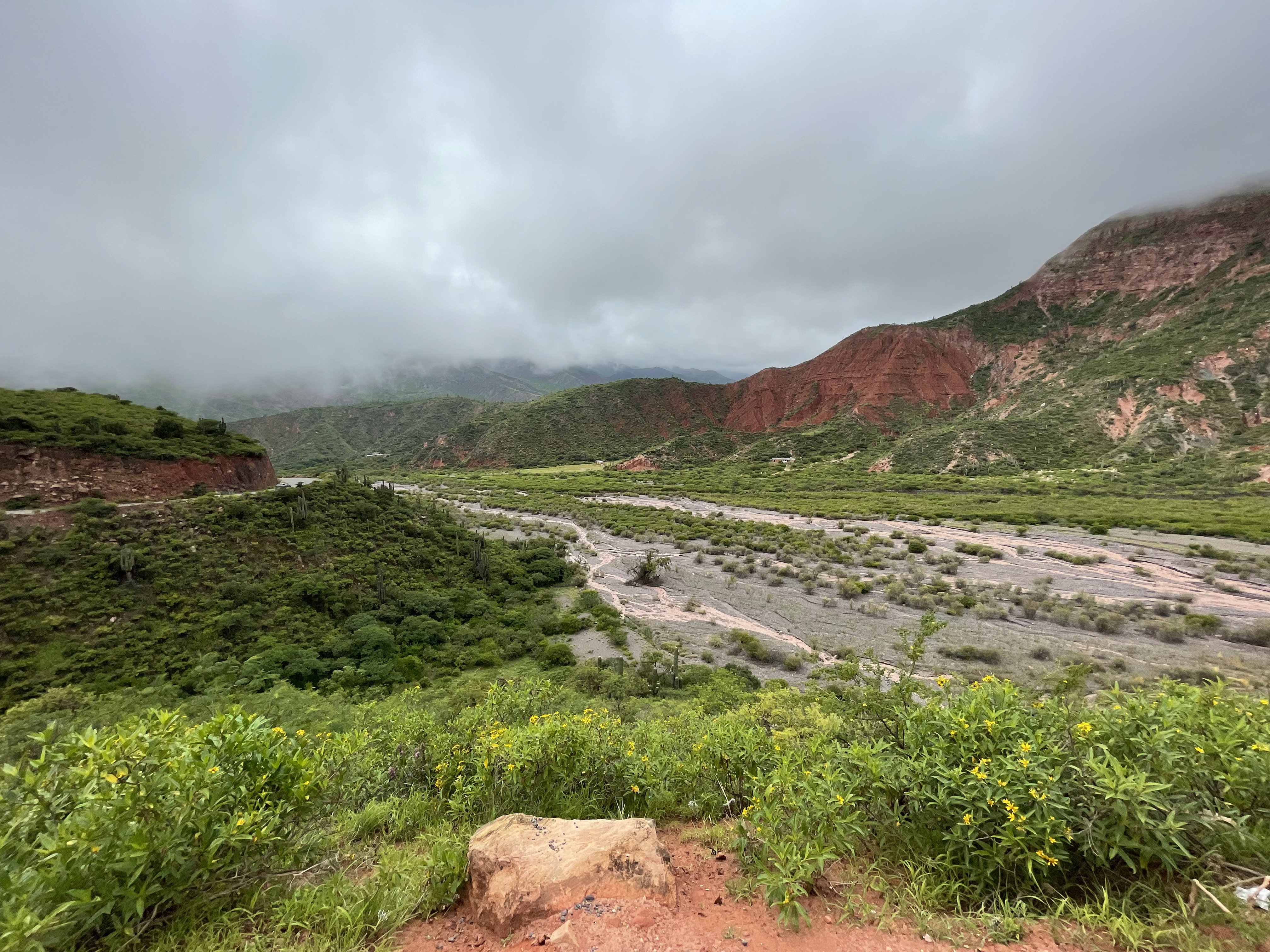
But, after getting through the summit, the weather was suddenly totally different and we could enjoy driving through the national park Parque Nacionales los Cardones. The surrounding was magical and we had it all for ourselves as there were no other cars driving by.

Right after, we once again ended up on the Ruta 40 😕 Even though the views were really spectacular, the car and I really suffered while progressing very slowly. Anxiety, nerves, crying and the endless route ahead of us made this an unpleasant experience (But now, writing this from my couch, I’m really glad we experienced that 😅). At least there were no cliffs or rivers.
Finally, we arrived in Cafayate, you cannot imagine the happiness when I saw an asphalt road again 🙈. A quick search on Booking and straight to bed, we need to rest!

Day 6
The next day our host lady told us about a waterfall (Cascadas del Rio Colorado) located only a few kilometers from the town. We decided to stay for one extra day so we had time to check it out. When we came to the beginning of the trail, we got almost immediately offered guide services. We kindly refused and thought about what could be so hard about going to one waterfall. Well, we found out really quickly. There were no marks on the trail, so it was really difficult to navigate. A few times we followed some other groups of people and many times we had to cross the river. Even though we felt really courageous, after some time we gave up and decided to return as it was getting very complicated. Next time I’d probably hire a guide 😄.
Day 7
Cafayate is a city of wine, which means you have to stay there at least for a day or two to explore it a bit. There are many vineyards and small wineries around so we went to check out one. The specialty of this city is wine ice cream, which you should definitely try. It was amazing 😋.
The whole region lies in Calchaquí Valleys, an area known for its red rock formations. Thanks to that, our journey back to Salta was stunning and we stopped by many places along the way just to admire this beauty.

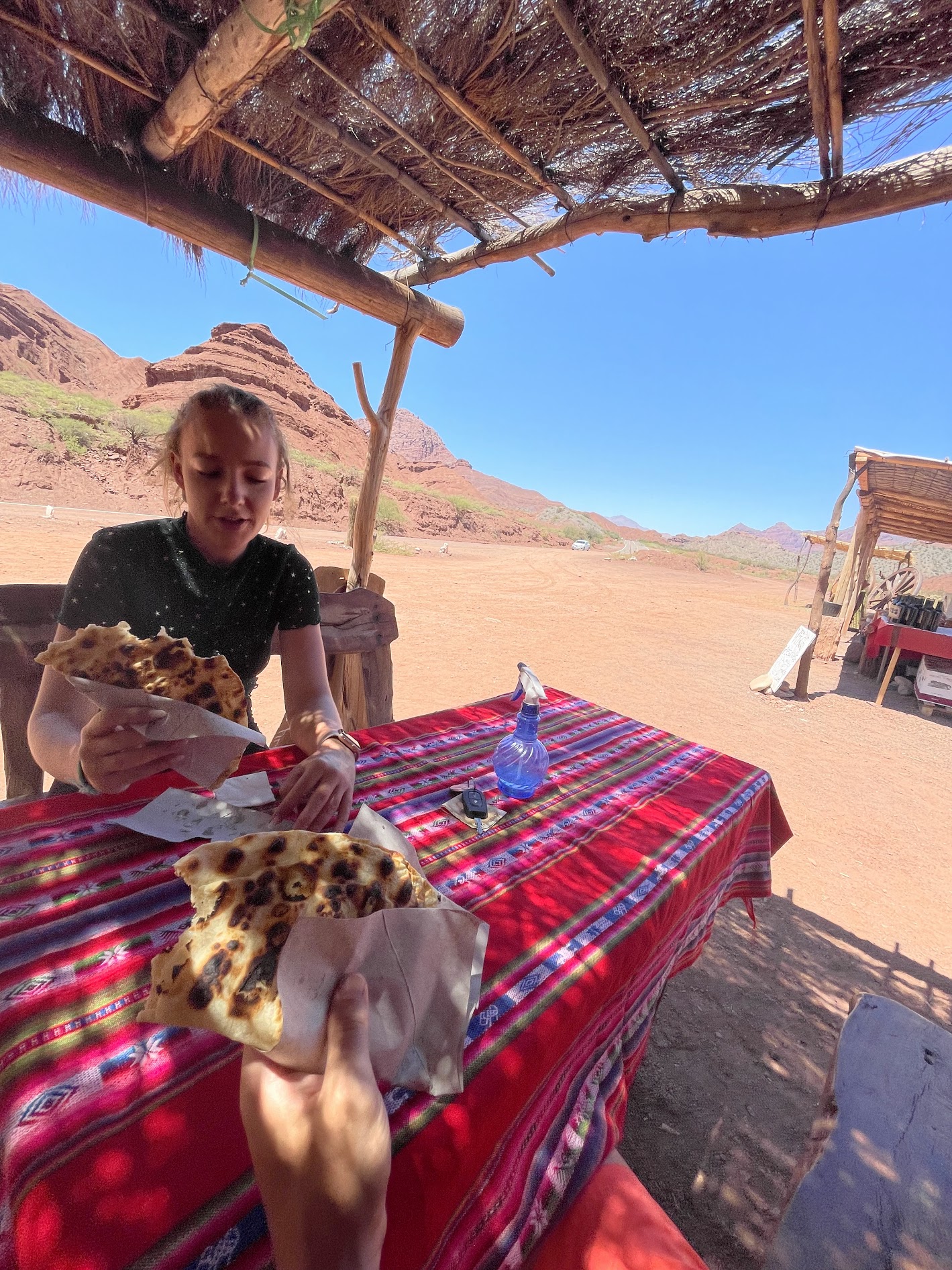
Day 8 & 9
After arriving back in Salta, we returned our car, found accommodation and enjoyed the vibe of the city while wandering around. The next day in the morning we went to the airport and flew back to Buenos Aires to face the reality of casual working days 😀.
To sum up our adventure, I must say that I’m really glad that we visited this part of the country. The northern part might not be so well-known but I think it’s a shame because it has a lot to offer and is very beautiful. During the journey we fought with altitude sickness, bad quality of roads and no internet connection but all of that was balanced by the outstanding views of the mountains and nature.
Is that all? 😱
Yes, at least for now. We spent three weeks traveling around the country and it was time to get back to work/school. During this time though, we managed to see many awesome places but there’s definitely more that Argentina has to offer 🙈.
To name a few,
- Ushuaia - End of the world - the southernmost city in the world and also an entry gate to Antarctica. How cool it must be to say “I was at the end of the world?”. Definitely should be on your bucket list when visiting Argentina 😁.
- Mendoza - if you’re a fan of wine, this is something for you. I can only distinguish wines based on color, so this was not that appealing to me 😅. But it’s also a good starting point for Aconcagua, so hopefully, I’ll come here one day.
- Bariloche - the region full of lakes, looks nice but it was quite far from our route, so maybe next time.
- Iguazu waterfalls — the largest waterfall system in the world. Definitely should pay a visit if you’re near. I’m sure we’ll make it there during our stay in Argentina 🤞.
- Parque Nacional Talampaya — looks very beautiful, the only downside is that it’s too far from any bigger city 😕.
Summary & useful tips 📝
Here I’m gonna leave a few tips that we found useful or learned the hard way during this trip:
- Learn at least basic Spanish words - I can’t stress that enough, but you will really need that as people don’t speak English here.
- The country is really big, keep that in mind when planning your transfers. It takes some time to transfer between points. There is a good network of buses, which are very comfortable. You can buy tickets either personally or on busbud.com. Beware, that some companies require tickets to be printed out!
- It’s good as a first country if you want to explore South America, it has its own issues but it’s not such a big cultural shock.
- Beware that the seasons are the other way around here. So it’s very hot in January, and only around 10℃ in July.
- It’s a beautiful country that has a lot to offer - oceans, mountains, glaciers, lakes, deserts, waterfalls, modern cities, vineyards, … Also, a lot of cool animals! Definitely worth a visit.
- As the country is large, it’s not well covered by a mobile signal. Many times when you leave the inhabited area you can end up with no connection. Also, 4G doesn’t mean anything here. You can have 4G and still barely load a website.
- Have offline maps!
- Google maps are not always accurate. Some points don’t exist in reality or are in different places. In some smaller towns, the navigation might get lost. Don’t rely on the opening hours shown in the app.
- Prefer payments by cash and use Western Union or a similar service to get the Blue rate.
- Don’t forget to use sunscreen, really.
- If you want a local SIM card, I can only recommend Claro - works like a charm, they have a nice web application to recharge your data and see your spending. It also offers roaming packages for the neighboring countries.
For more photos check out our instagram profiles 📸
🙋🏼♀️ @sandratomasova
🙆🏻♂️ @jozefcipa
Peace ✌️



